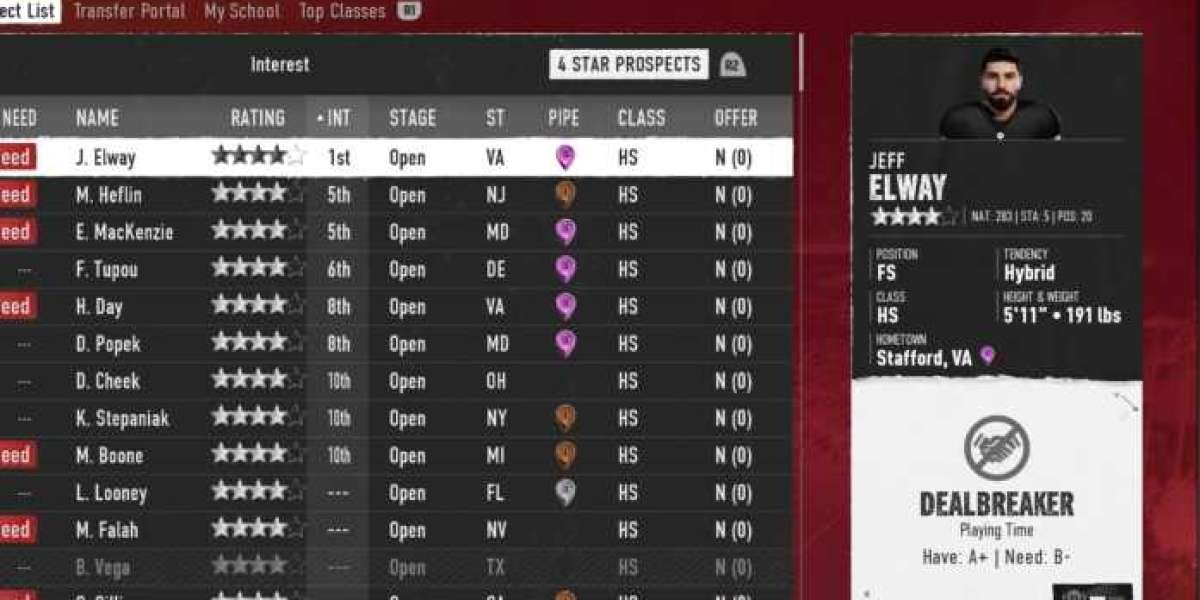Recruiting in College Football 25 can make or break your Dynasty, especially when aiming to land coveted 5-star recruits. The process may seem daunting, but with the right strategy, even smaller programs can punch above their weight. This article outlines the best method to consistently recruit 5-star players, using the lessons learned from in-game strategies and years of experience.
Why Focus on 5-Star Recruits?
The difference between a 5-star recruit and a lower-rated player is game-changing. A 5-star recruit typically arrives on campus with an overall rating ranging from 75 to 83, while 3-star recruits are often in the 66-70 range. This talent gap directly impacts your program’s success, as higher-rated players can start immediately and offer more upside. While 4-star recruits can also be pivotal, focusing on 5-star players grants your team the elite edge needed to compete at the highest level. Smaller programs, however, should be cautious—pursuing too many 5-star recruits without the proper resources can lead to wasted time and missed opportunities.
Setting Up Your Board and Recruiting Strategy
When beginning your recruiting process, the first priority is setting up your recruiting board. Add every 5-star recruit you can find, regardless of their initial interest in your program. Offer scholarships immediately and begin allocating hours strategically. Here’s how to approach your recruiting process step by step:
Balance Visits and Scheduling Matches Wisely:
To maximize your chances, adjust your schedule to include home games during key recruiting weeks. Weeks 4, 6, and 10 are ideal for scheduling visits. Home games against beatable opponents are crucial, as winning these games can significantly boost a recruit’s interest. If possible, schedule rivalry games or matches against slightly better teams, as these games provide additional motivation bonuses.Pipeline Boosts Matter:
Recruits from states within your pipeline provide a significant advantage. For example, selecting Maryland as your program offers a natural pipeline to players in states like Delaware and Maryland. This boost increases your chances of landing top recruits. For smaller programs without strong pipelines, focus on fewer 5-star recruits and supplement your class with 4-star players.Know When to Let Go:
Not every 5-star player will commit to your program, and that’s okay. If a recruit locks you out or shows overwhelming interest in powerhouse programs like Alabama or Georgia, it’s better to cut your losses and reallocate resources to players who are still within reach.
The Importance of Visits
Visits are one of the most critical components of recruiting. Always prioritize getting your 5-star targets on campus as early as possible. Schedule visits based on a recruit’s motivations. For example, if a player values staying close to home, choose a nearby opponent for their visit. Avoid bye-week visits unless absolutely necessary, as they provide less value. Additionally, aim for "tiered" visits—higher-tier opponents or rivalry games provide bonus arrows, increasing the recruit’s interest.
Complementary visits (grouping offensive or defensive players together) also offer a boost. For example, schedule all offensive recruits to visit during one week and defensive recruits during another. This method ensures additional motivation bonuses for each player.
Utilizing Hard Sell and Motivation Bonuses
Once recruits hit their Top 5 or Top 3, the Hard Sell tool becomes your best friend. This recruiting action is most effective when it matches the recruit’s top motivations. To determine the best pitch, use the Rule of 19: combine the letter grade values of three motivations (A+ = 13, A = 12, B+ = 10, etc.). If the total exceeds 19, Hard Sell is more valuable than other actions like sending the house.
For example, a recruit with A+ (13), B (9), and C (7) motivations totals 29, making Hard Sell the ideal choice. Prioritize motivations like playing time, proximity to home, and championship contender status, as these often hold the most weight with recruits.
Adjusting for Smaller Programs
Smaller programs with fewer resources must adapt by focusing on fewer players. For 1- or 2-star programs, pursuing one or two 5-star recruits is more realistic than chasing a dozen. Instead, target 4-star recruits to fill out your roster. The distinction between 4-stars and 3-stars is significant, as the former often contribute immediately to your team’s success.
Additionally, smaller programs should prioritize upgrading their Recruiter Abilities in the coaching tree. Investing in Tier 2 and Tier 3 recruiter skills allows you to allocate more hours to each recruit and gain bonus boosts for key positions.
Handling Setbacks and Maximizing Results
Recruiting is unpredictable, and not every target will commit to your program. It’s common to lose recruits to powerhouse schools, even after scheduling visits and allocating hours. When this happens, pivot to 4-star or even 3-star players. Many 4-stars, and even some 3-stars, remain uncommitted late in the season, offering a chance to salvage your recruiting class.
For example, if you’ve allocated all your hours to 5-star recruits and still have time left after losing a few battles, shift focus to uncommitted players. By this point in the season, there are usually several overlooked 4-stars available, some of whom may even have elite traits.
A Perfect Example: Maryland’s Success
Using Maryland—a 3-star program—as an example, this method can yield incredible results. Maryland started the season by targeting 12 5-star recruits and ultimately landed six of them, including the number one player in the nation. This success was achieved by strategically scheduling visits, leveraging pipeline boosts, and focusing resources on players with the highest likelihood of committing.
Landing six 5-stars as a 3-star program is an exceptional outcome, especially when compared to real-life recruiting, where only a handful of programs secure multiple 5-star recruits in a single cycle. This method allows even smaller schools to build competitive rosters quickly.
The best 5-star recruiting method in College Football 25 revolves around smart resource allocation, strategic scheduling, and understanding player motivations. While smaller programs face more challenges, following this method can lead to incredible results over time. If you want to speed up your program’s development, consider supplementing your efforts with College Football 25 Coins, the in-game currency that helps you unlock premium players and packs. You can buy College Football 25 Coins for sale at AOEAH to give your recruiting class an extra edge.
For a deeper dive into recruiting strategies and mechanics, check out this comprehensive College Football 25 All-In-One Recruiting Guide. With these tools and insights, you’ll be well on your way to building a powerhouse program in College Football 25. Good luck, and happy recruiting!








